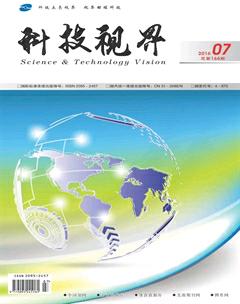An Insight into the Growth of Department Stores in Hangzhou
XIE+Yuan-yuan
【Abstract】This assignment will critically examine the competitive strategies of four selected department stores in Hangzhou and the reasons why the choice of them depends on different customer values. It will also highlight the capabilities that companies used to realize their strategies.
【Key words】Competitive strategies; Department stores; Marketing position
The success of a company is determined to a large extent by efficient approaches to positioning. According to Porter (1980), there are three generic strategies known as cost leadership, differentiation and focus. In this article, strategies of Hangzhou Tower Shopping Centre and Yintai Shopping Centre are defined as differentiation and focus, while the position of Hangzhou Department Store (Baida in short) is low cost and differentiation and that of Fengqi Road Small Commodity Market low cost and broad.
Hangzhou is one of the most developed cities in China, where people have a high purchase power. However, wealthy people used to shop in other cities such as Shanghai, Guangzhou as opposed to Hangzhou because there were no goods meeting their needs. Seizing this opportunity, Hangzhou Tower employed the strategy of differentiation and focus, importing a large amount of brand goods such as LV, Burberry, and Escada. Hangzhou Tower, located in the most prosperous area of Hangzhou City, attracts customers who are price-insensitive and quality-conscious.
Following the trend, Yintai Shopping Centre has broken the concept of traditional department stores and become a new one integrating shopping, eating and entertainment. It focused on the medium and high quality products but failed to compete with Hangzhou Department Store and Hangzhou Tower. After the failure in 1999, Yintai adjusted its position, transforming itself from product divisions to consumer segments. It began to focus on young people aged above 18 and families that pursue a fashionable living.
As mentioned above, Hangzhou Department Store aims at medium quality products suitable for medium-income people. In this way, it avoids direct competition with Hangzhou Tower and some small commodity markets. Compared to Hangzhou Tower, Baidas products are cheaper and in contrast to some small commodity markets, its service is superior and differential. Thus, relative “low cost” and “differentiation” are combined.
The last example is Fengqi Road Small Commodity Market. An abundance of low-priced goods aims at low-income people among whom there are a lot of migrant workers who have swarmed into Hangzhou over the past few years. The position of the market has its advantages over the shopping centres. It targets the low-income people and provides some household products that customers need are not available in large department stores. Most importantly, customers have a strong bargaining power because it offers cheap and imitation products. According to Thompson (2003), low price and lower quality is a differentiation strategy. However, his idea contradicts the concept of differentiation as achieving premium price by adding value. Hence, the strategy of Small Commodity Market should still be low cost.
Having analysed the different strategies of the four stores, the capabilities required for success will be analyzed from the perspectives of “outside-in”, “inside-out” and “spanning”.
Hangzhou Tower Shopping Centre has a strong sense of market and it reinforces its image by importing world famous brands which are superior quality commodities. As well as this, Hangzhou Tower builds a strong relationship with its focused customers by providing one-to-one service to some VIP customers. On the whole, Hangzhou Tower succeeded in establishing its brand recognition.
As for Yintai, it is able to foresee the huge turnover that fashion brings and focus on fashion. Yintai proactively takes risks and innovates itself and differentiates its route from that of Hangzhou Tower.
Baida, however, believes in the human-based management philosophy “100% for customers”. Unlike other stores, it emphasizes pre-sale service as well as after-sale service. Word-of-mouth advertisement was facilitated by the loyalty card scheme. It also established customer support help-line. As for information management, an extensive database on consumer purchasing behaviour has allowed Baida to understand needs of customers. It also creates an intranet, where customers can check the credit, exchange ideas, etc. These attributes succeed in motivating and retaining customer loyalty and contribute to future development.
As far as Small Commodity Market is concerned, the philosophy is “low profit margin” and “high sales volume”. It compares very favourably with its rivals on cheap commodities. The overheads are reduced through simple decoration, a low rent area, the relatively low customer service as well as the wholesale trade. Furthermore, it has a simplified information system able to search the most up-to-date market information. All of these features create a successful basis for competition.
In summary, the success of an enterprise is based on the correct marketing position. The consumer goods sector is extremely competitive in Hangzhou. Promotion is no longer the only way to achieve competitive advantage. As China has entered the WTO, the department store sector has faced great challenges from large foreign-owned enterprises. However, the increase of purchase power will not be as fast as that of the emergence of those enterprises. Therefore, the prosperous future of department stores is mainly decided by unique features, customer service, innovation, and a quick response to the changing environment.
【References】
[1]Porter, E., M.(1980) Competitive Strategy; Techniques for Analysing Industries and Competitors. New York: The Free Press[Z].
[2]Thompson,L.,J.(2003). Strategic Management. London: Thomson Learning[Z].
[责任编辑:汤静]

